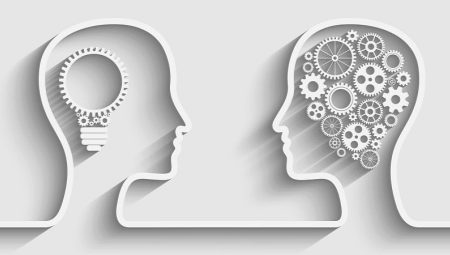Often the reliability of the investigation of the situation depends on the chosen way of thinking. Information can be obtained by moving from the analysis of parts of the object to the subsequent study of the whole subject. It's about induction.
What it is?
Inductive thinking means a transition from a particular case, a separate fact to a generalization, which is based on the coinciding properties that are mandatory for all the objects studied. For example, studies of the solubility of ammonia, potassium, calcium, sodium nitrate in a liquid led scientists to the idea that all nitrates are well soluble in water. Inductive thinking is characterized by a transition from a specific image to a generalization of facts and the derivation of general rules.
This means that human thought at the moment of tracking some phenomena or studying objects seeks out homogeneous signs or general patterns and forms a common position for them. Observations allow us to come to a general conclusion.
The inductive method is plastic. Its mechanism is aimed at finding objective criteria for confirming hypotheses using empirical premises.

The inductive thought process is not based on the invention of the rule of discoveries of scientific truths. Inductive Reflections suggest confirmation of a reliable conclusion based on assumptions, specific observations. The final argument confirms the truth of the conclusion. Based on a generalization of explanations, a theory is constructed.
The method is widely used in science. At the initial stage, it lends itself to research, in contrast to the deductive method, aimed at proving and confirming hypotheses. Inductive thought act is focused on the creation of new theories that arise in the study of specific facts.The information is descriptive in nature and can be compared.
Relying only on the inductive thought process without the parallel use of deductive thinking is not recommended. It is best to arrive at the final result, which is obtained in a deductive way and confirmed by signs identified by induction.
The use of only the inductive method can lead to a false conclusion. For example, everyone knows that sugar, soda and salt are highly soluble in water. These are loose substances. As a result, we can make a false conclusion that all solids are well soluble in water. Sand is a loose substance, therefore, it is highly soluble in water. However, it is not.

Types
There is the expression "female logic." It appeared because of the habit of women to conclude from separately snatched phrases uttered by someone. For example, the head of the family chided the spouse for salting the soup. Another time, he asked her why the jacket was still not ironed. Based on two comments, the wife concludes that her husband considers her a poor mistress. Men tend to think in a deductive way. They perceive logic and integrity, and women perceive specifics and details.
When induction prevails in mental activity, conclusions appear that do not always correspond to the truth. Only the simultaneous correct use of inductive and deductive methods can save a person from pathology in the thought process. Types of inductive thinking include generalization, statistical syllogism, simple induction, an argument from analogy, random conclusion, forecasting.
- The generalization proceeds from a separate premise, which leads to a general conclusion. Example: a girl liked the story of Valentin Rasputin's Fire. She wanted to study the entire work of the writer, because she was sure that all the works cause great interest among readers.
- Statistical syllogism leads from generalization to the conclusion about the individual. For example, a flu epidemic began in the village. Victor is a resident of this village. Therefore, he can get the flu.
- Simple induction comes from the premise of a small sample to the conclusion of another person. You can give an example. Before the arrival of the guests, the sister restores order in her room. The next visit of friends again encourages her sister to clean the apartment. This means that the sister each time cleans up before visiting friends of the family hearth.
- The argument from analogy involves taking into account the general qualities of several objects with the subsequent conclusion that things can also have other properties. For example, for a sheep, wool means the same as for a cow, milk.
- A random conclusion can be established as a result of the ratio of two objects indicating a causal relationship between them. Confirm this relationship must other established data. Thus, a study of male alcoholism revealed that some test drinkers in childhood watched their parents drink. Conclusion: the frequent use of alcohol in the family causes alcoholism in men.
- Prediction is preceded by samples taken from a past life. For example, a friend bought a lottery ticket and won a lot of money, therefore, by purchasing such tickets, I can also get rich unexpectedly.

How to develop?
For the formation of an inductive thought process it is necessary to develop the flexibility of thinking in general. To do this, expand their horizons, increase their own living space. A person who thinks one-sidedly is not able to build many probabilities of the development of events, fully and reliably explain any phenomenon.
The conclusion should be made only on the basis of accurate judgments. The concept of truth and reliability of information can be formed only upon receipt of specific conclusions. For this purpose, it is necessary to turn to new knowledge gleaned from read books.Reading develops the mental activity of the individual, who mentally builds interconnected chains of information received, comes to the correct result. Solving logical and mathematical problems allows you to train both inductive and deductive ways of thinking.
The ability to use two methods in the aggregate enables a person to always distinguish between true and false assumptions, to draw reliable conclusions.











